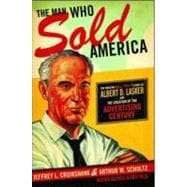
What is included with this book?
| Introduction | p. 1 |
| The Orator and the Entrepreneur | p. 9 |
| The Galveston Hothouse | p. 21 |
| Success in Chicago | p. 35 |
| Salesmanship in Print | p. 53 |
| Growing Up, Breaking Down | p. 67 |
| The Greatest Copywriter | p. 89 |
| Orange Juice and Raisin Bread | p. 113 |
| Fighting for Leo Frank | p. 125 |
| Into the Tomato Business | p. 143 |
| Saving Baseball from Itself | p. 155 |
| Venturing into Politics | p. 169 |
| Electing a President | p. 179 |
| The Damnedest Job in the World | p. 197 |
| A Family Interlude | p. 215 |
| A Defeat and Two Victories | p. 223 |
| Selling the Unmentionable, and More | p. 239 |
| Retrenching and Reshaping | p. 263 |
| Selling and Unselling California | p. 289 |
| The Downward Spiral | p. 315 |
| Changing a Life | p. 335 |
| Finding Peace | p. 351 |
| The Lasker Legacy | p. 367 |
| A Note on Sources | p. 381 |
| Notes | p. 383 |
| Index | p. 417 |
| Acknowledgments | p. 433 |
| About the Authors | p. 435 |
| Table of Contents provided by Ingram. All Rights Reserved. |
The New copy of this book will include any supplemental materials advertised. Please check the title of the book to determine if it should include any access cards, study guides, lab manuals, CDs, etc.
The Used, Rental and eBook copies of this book are not guaranteed to include any supplemental materials. Typically, only the book itself is included. This is true even if the title states it includes any access cards, study guides, lab manuals, CDs, etc.